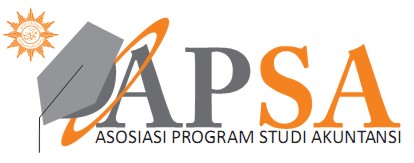Determining Factors of Cloud Computing Adoption: A Study of Indonesian Local Government Employees
DOI:
https://doi.org/10.18196/jai.2102151Keywords:
Cloud Computing, Employee, Local Government, UTAUTAbstract
Research aims: This study aims to identify the factors that influence the Indonesian local government employees to adopt cloud computing.
Design/Methodology/Approach: A Unified Theory of Acceptance and Use of Technology (UTAUT) theory were employed to identify these factors. Research data were obtained using an online survey of employees, working in local governments in Indonesia. This study obtained 123 responses, which were then processed utilizing the structural equation modeling approach.
Research findings: The results showed that Performance Expectations, Business Expectations, and Perception of Availability had a positive effect on the intention of local government employees to use cloud computing.
Theoretical contribution/ Originality: This study expanded the UTAUT model by including security factors. Thus, creating a new cloud computing adoption model contributed to a theoretical finding in the context of government cloud computing adoption.
Practitioner/Policy implication: The results of this study make practical contributions to cloud computing service providers in order to understand what factors drive the adoption of cloud computing by local government employees. In addition, the study also helps the top management in local government organizations to develop adoption strategies by understanding the influential determinants of cloud computing adoption on their employees.
Research limitation/Implication: The context of this study is restricted to Indonesian local government employees. The local government employees have their characteristics, and it is different from other government employees in the central government.
References
Abeywickrama, M., & Rosca, V. (2015). Public Organizations Flying in the Cloud : A Case Study of Cloud Computing Value Creation in Moldova. Master Thesis. Department of informatics, Universitet UMEA. Retrieved from https://www.diva-portal.org/smash/get/diva2:821622/FULLTEXT01.pdf
Ahmad, M., & Hasibuan, Z. A. (2012). E-Government Based on Cloud Environment in Indonesia. Seminar Nasional Aplikasi Teknologi Informasi 2012 (SNATI). Retrieved from https://www.google.com/url?sa=t&rct=j&q=&esrc=s&source=web&cd=2&cad=rja&uact=8&ved=2ahUKEwj42Orz7ZzpAhUt7XMBHYIwCFoQFjABegQIAhAB&url=https%3A%2F%2Fjournal.uii.ac.id%2FSnati%2Farticle%2Fdownload%2F2893%2F2652&usg=AOvVaw0FcuM2zKrG7k4ogFcFDvdg
Ajzen, I. (1991). The Theory of Planned Behavior. Organizational Behavior and Human Decision Processes, 50(2), 179–211. https://doi.org/10.1016/0749-5978(91)90020-t
Alassafi, M, O., Alharthi, A., Walters, R. J., & Wills, G. B. (2017). A Framework for Critical Security Factors That Influence the Decision of Cloud Adoption by Saudi Government Agencies. Telematics and Informatics, 34, 996–1010. https://doi.org/10.1016/j.tele.2019.04.003
Alraja, M. N. (2016). The Effect of Social Influence and Facilitating Conditions on E-Government Acceptance From the Individual Employees’ Perspective. Polish Journal of Management Studies, 14(2), 18–27. https://doi.org/10.17512/pjms.2016.14.2.02
Al-Rashedi, A. A. (2014). E-Government Based on Cloud Computing and Service-Oriented Architecture. International Journal of Computer and Electrical Engineering, 6(3), 201-206. https://doi.org/10.7763/ijcee.2014.v6.822
Al-Ruithe, M., Benkhelifa, E., & Hameed, K. (2017). Current State of Cloud Computing Adoption - An Empirical Study in Major Public Sector Organizations of Saudi Arabia (KSA). Procedia Computer Science, 110, 378-385. https://doi.org/10.1016/j.procs.2017.06.080
Alshehri, M., Drew, S., & AlGhamdi, R. (2013). Analysis of Citizens Acceptance for E-Government Services: Applying the UTAUT Model. International Conference Theory and Practice in Modern Computing and Internet Applications and Research, 69–76. Retrieved from https://arxiv.org/abs/1304.3157
Anderson, C., Baskerville, R. L., & Kaul, M. (2017). Information Security Control Theory: Achieving a Sustainable Reconciliation between Sharing and Protecting the Privacy of Information. Journal of Management Information Systems, 34(4), 1082-1112. https://doi.org/10.1080/07421222.2017.1394063
Anderson, J. C., & Gerbing, D. W. (1988). Structural Equation Modeling in Practice: A Review and Recommended Two-Step Approach. Psychological Bulletin, 103(3), 411-423. https://doi.org/10.1037/0033-2909.103.3.411
Aryani, R. A. I., Herwanti, R. T., & Basuki, P. (2018). The Effect of Perception of Use, Ease, Security, and Confidentiality to Use E-Filing (Study In The Tax Office Pratama Raba Bima). International Journal of Scientific Research and Management, 6, 4, 294–304. https://doi.org/10.18535/ijsrm/v6i4.em08
Azidin, S.S., Romle, A. R., & Mansor, M. H. (2015). Overarching Unified Theory of Acceptance and Use of Technology(Utaut) Model on The Factors Effecting Behavioral Intention Towards E-Government Adoption in Malaysia. International Journal of Administration and Governance, 1(10), 106-110.
Bourne, J. (2018). Alibaba Cloud Opens up First Indonesian Data Centre. CLOUDTECH. Retrieved from https://www.cloudcomputing-news.net/news/2018/mar/16/alibaba-cloud-opens-first-indonesian-data-centre/
BSA, The Software Alliance. (2018). Indonesia Falls in Updated BSA Global Cloud Computing Scorecard ’s Rankings. Retrieved from https://www.google.com/url?sa=t&rct=j&q=&esrc=s&source=web&cd=2&cad=rja&uact=8&ved=2ahUKEwj5o5Oe8ZzpAhWPeX0KHU1NDxgQFjABegQIARAB&url=https%3A%2F%2Fcloudscorecard.bsa.org%2F2018%2Fpdf%2FBSA_2018_Global_Cloud_Scorecard.pdf&usg=AOvVaw36pjqQO1_eitgYy2MNXKp9
Carnall, C. (2017). Awareness, Attitude, and Purchase Intention's Influence on the Response to the Out of Stock of Organic Yogurts. Dissertation. Retrieved from https://repositorio.ucp.pt/bitstream/10400.14/22133/1/Msc%20Dissertation%20Carolina%20Carnall.pdf
Chaeikar, S. S., Jafari, M., Taherdoost, H., & Chaei Kar, N. S. (2012). Definitions and Criteria of CIA Security Triangle in Electronic Voting System. International Journal of Advanced Computer Science and Information Technology IJACSIT, 1(1), 1–10. Retrieved from http://citeseerx.ist.psu.edu/viewdoc/download?doi=10.1.1.428.9741&rep=rep1&type=pdf
Chandrasekaran, A., & Kapoor, M. (2011). State of Cloud Computing in the Public Sector–A Strategic Analysis of the Business Case and Overview of Initiatives Across Asia Pacific. Frost & Sullivan.
Chin, W. W. (1998). Commentary: Issues and Opinion on Structural Equation Modeling. MIS Quarterly 22.
Davis, F.D. (1989). Perceived Usefulness, Perceived Ease of Use, and User Acceptance of Information Technology. MIS Quarterly, 13, 319-340.
Deventer, M. V., Klerk, N. D., & Bevan-Dye, A. (2017). Influence of Perceived Integrity and Perceived System Quality on Generation Y Students’ Perceived Trust in Mobile Banking in South Africa. Banks and Bank Systems, 12(1), 128-134. https://doi.org/10.21511/bbs.12(1-1).2017.05
Dwivedi, Y, K., Rana, N.P., Jeyaraj, A., Clement, M., & Williams, M.D. (2017). Re-Examining The Unified Theory of Acceptance and Use of Technology (UTAUT): Towards a Revised Theoretical Model. Information Systems Frontiers, 21(1), 719-734. https://doi.org/10.1007/s10796-017-9774-y
Goode, S., Lin, C., Tsai, J. C., & Jiang, J. J. (2015). Rethinking the Role of Security in Client Satisfaction with Software-as-a-Service (SaaS) Providers. Decision Support Systems, 70, 73-85. https://doi.org/10.1016/j.dss.2014.12.005
Gupta, B., Dasgupta, S., & Gupta, A. (2008). Adoption of ICT in a Government Organization in a Developing Country: An Empirical Study. Journal of Strategic Information Systems, 17(2), 140-154. https://doi.org/10.1016/j.jsis.2007.12.004
Hair, J. F., Sarstedt, M., Ringle, C. M & Mena, J. A. (2012). An Assessment of the Use of Partial Least Squares Structural Equation Modeling in Marketing Research. Journal of the Academy of Marketing Science, 40, 414–33. https://doi.org/10.1007/s11747-011-0261-6
Haneem, F., Kama, N., Taskin, N., Pauleen, D., & Bakar, N. A. A. (2019). Determinants of Master Data Management Adoption by Local Government Organizations : An Empirical Study. International Journal of Information Management, 45, 25–43. https://doi.org/10.1016/j.ijinfomgt.2018.10.007
Hartono, E., Holsapple, C. W., Kim, K.Y., Na, K.S., & Simpson, J.T. (2014). Measuring Perceived Security in B2C Electronic Commerce Website Usage: A Respecification and Validation. Decision Support Systems, 62, 11–21. https://doi.org/10.1016/j.dss.2014.02.006
Hartono, E., Kim, K. Y., Na, K. S., Simpson, J.T., & Berkowitz, D. (2013). Perceived Site Security as a Second Order Construct and Its Relationship to E-Commerce Site Usage. Advances in Information Systems and Technologies, 206, 1075-1085. https://doi.org/10.1007/978-3-642-36981-0_102
Hartono, J. (2017). Membangun IT Savy Untuk Menjadi Organisasi Digital Master (chapter 1). Yogyakarta: Penerbit Andi.
Hermana, B., & Silfianti, W. (2011). Evaluating E-Government Implementation by Local Government: Digital Divide in Internet-Based Public Services in Indonesia. International Journal of Business and Social Science, 2(3), 156–64. Retrieved from http://www.ijbssnet.com/journals/Vol._2_No._3_%5BSpecial_Issue_-_January_2011%5D/18.pdf
Hossain, A., Quaresma, R., & Rahman, H. (2019). Investigating Factors Influencing the Physicians' Adoption of Electronic Health Record (EHR) in the Healthcare System of Bangladesh: An Empirical Study. International Journal of Information Management, 44, 76–87. https://doi.org/10.1016/j.ijinfomgt.2018.09.016
Janssen, M., & Joha, A. (2011). Challenges for Adopting Cloud-Based Software As a Service (Saas) in the Public Sector. Proceedings of European Conference on Information Systems, ECIS, 1–12. Retrieved from http://aisel.aisnet.org/ecis2011?utm_source=aisel.aisnet.org%2Fecis2011%2F80&utm_medium=PDF&utm_campaign=PDFCoverPages
Jemmy. (2014). Leading End-to-End ICT Company in Indonesia. E-Governance and Cloud Computing. Retrieved from http://anitanet.staff.ipb.ac.id/files/2014/09/Telkom_Governance-Cloud-Computing-V2.pdf
John, G. (1984). An Empirical Investigation of Some Antecedents of Opportunism in a Marketing Channel. Journal of Marketing Research, 21(3), 278 to 289. https://doi.org/10.1177/002224378402100305
Jones, S. (2015). Cloud Computing Procurement and Implementation: Lessons Learnt from a United Kingdom Case Study. International Journal of Information Management, 35(6), 712-716. https://doi.org/10.1016/j.ijinfomgt.2015.07.007
Jr Hair, J. F., Black, W. C., Babin, B. J, & Anderson, R. E. (2014). Multivariate Data Analysis. Edinburg: Pearson Education Limited.
Lian, J-W., Yen, D. C., & Wang, Y-T. (2014). An Exploratory Study to Understand the Critical Factors Affecting the Decision to Adopt Cloud Computing in Taiwan Hospital. International Journal of Information Management, 34(1), 28–36. https://doi.org/10.1016/j.ijinfomgt.2013.09.004
Liang, Y., Qi, G., Wei, K., & Chen, J. (2017). Exploring the Determinant and Influence Mechanism of E-Government Cloud Adoption in Government Agencies in China. Government Information Quarterly, 34(3), 481–95. https://doi.org/10.1016/j.giq.2017.06.002
Macias, F., & Thomas, G. (2011). Cloud Computing Advantages in the Public Sector. White Paper. Retrieved from http://services.igi-global.com/resolvedoi/resolve.aspx?doi=10. 4018/978-1-4666-8629-8.ch009
Microsoft Foundation. (2016). Modernizing the Public Sector through the Cloud. Retrieved from https://researchictafrica.net/wp/wp-content/uploads/2017/10/Cloud-Computing-in-the-public-sector-final-25052017_V03.pdf
Ministry of Home Affairs of the Republic of Indonesia. (2014). Pembentukan Daerah-Daerha Otonom Di Indonesia Sampai Dengan Tahun 2014. Retrieved from http://otda.kemendagri.go.id/CMS/Images/SubMenu/total_daerah_otonom.pdf
Mohammed, F., Ibrahim, O., & Ithnin, N. (2016). Factors Influencing Cloud Computing Adoption for E-Government Implementation in Developing Countries: Instrument Development. Journal of Systems and Information Technology, 18(3), 297-327. https://doi.org/10.1108/jsit-01-2016-0001
NIST. (2013). NIST Cloud Computing Standards Roadmap. Retrieved from https://nvlpubs.nist.gov/nistpubs/SpecialPublications/NIST.SP.500-291r2.pdf
Oliveira, T., Faria, M., Thomas, M. A & Popovič, A. (2014). Extending The Understanding of Mobile Banking Adoption: When UTAUT Meets TTF and ITM. International Journal of Information Management, 34(5), 689-703. https://doi.org/10.1016/j.ijinfomgt.2014.06.004
Ooi, K. B., Lee, V. H., Tan, G. W. H., Hew, T. S., & Hew, J. J. (2018). Cloud Computing in Manufacturing: The Next Industrial Revolution in Malaysia? Expert Systems With Applications, 93, 376–94. https://doi.org/10.1016/j.eswa.2017.10.009
Pross, L. (2016). Trust in the Cloud. Master Thesis. Retrieved from http://essay.utwente.nl/71524/1/Pross_MA_BMS.pdf
Qadir, S., & Quadri, S. M. K. (2016). Information Availability: An Insight into the Most Important Attribute of Information Security. Journal of Information Security, 7(3) 185-94, https://doi.org/10.4236/jis.2016.73014
Rabaa’i, A. A. (2017). The Use of UTAUT to Investigate the Adoption of E-Government in Jordan: A Cultural Perspective. International Journal of Business Information Systems, 24(3), 285. https://doi.org/10.1504/ijbis.2017.10002806
Sallehudin, H., Razak, R.C., & Ismail, M. (2015). Factors Influencing Cloud Computing Adoption in the Public Sector: An Empirical Analysis. Journal of Entrepreneurship and Business, 3(1), 30-45. https://doi.org/10.17687/jeb.0301.03
Saxena, S., & Janssen, M. (2017). Examining Open Government Data (OGD) Usage in India through the UTAUT Framework. Foresight, 19(4), 421-436. https://doi.org/10.1108/fs-02-2017-0003
Silic, M., & Back, A. (2015). The Influence of Risk Factors in the Decision-Making Process for Open Source Software Adoption. International Journal of Information Technology & Decision Making, 15(1), 151-185. https://doi.org/10.1142/s0219622015500364
Skis, T & Sthephanides, G. (2005). The Concept of Security and Trust in Electronic Payments. Computer & Security, 24(1), 10-15. https://doi.org/10.1016/j.cose.2004.11.001
Susanto, T. D., & Goodwin, R. (2010). Actors Influencing Citizen Adoption of SMS-Based e-Government Services. Electronic Journal of e-Government, 8(1), 55-71. Retrieved from https://www.google.com/url?sa=t&rct=j&q=&esrc=s&source=web&cd=2&cad=rja&uact=8&ved=2ahUKEwjnqa6Ny53pAhUYWCsKHV-LCKMQFjABegQIAhAB&url=http%3A%2F%2Fwww.ejeg.com%2Fissue%2Fdownload.html%3FidArticle%3D165&usg=AOvVaw2tU6zrDa-SXtG3tH13XqZo
Udo, G., Bagachi, K., & Maity, M. (2016). Exploring Factors Affecting Digital Piracy Using the Norm Activation and UTAUT Models: The Role of National Culture. Journal of Business Ethics, 135(3), 517-541. https://doi.org/10.1007/s10551-014-2484-1
Venkatesh, V., Morris, M. G., Davis, G.B & Davis, F.D. (2003). User Acceptance of Information Technology: Toward A Unified View. MIS Quarterly, 27(3), 425-478. https://doi.org/10.2307/30036540
Voutinioti, A. (2013). Determinants of User Adoption of E-Government Services in Greece and the Role of Citizen Service Centres. Procedia Technology, 8, 238-244. https://doi.org/10.1016/j.protcy.2013.11.033
Wang, M. H. (2016). Factors Influencing Usage of E-Learning Systems in Taiwan's Public Sector: Applying the UTAUT Model. Advances in Management & Applied Economics, 6(6), 63-82. Retrieved from http://www.scienpress.com/Upload/AMAE%2FVol%206_6_5.pdf
Weerakkody, V., El-Haddadeh, R., Al-Sobhi, F., Shareef, M. A., & Dwivedi, Y. K. (2013). Examining the Influence of Intermediaries in Facilitating E-Government Adoption: An Empirical Investigation. International Journal of Information Management, 33(5), 716-725. https://doi.org/10.1016/j.ijinfomgt.2013.05.001
Yigitbasioglu, O. (2014). Modeling The Intention to Adopt Cloud Computing Services: A Transaction Cost Theory Perspective. Australian Journal of Information Systems, 18(3), 193–210. https://doi.org/10.3127/ajis.v18i3.1052
Zwattendorfer, B., & Tauber, A. (2013). The Public Cloud for E-Government. International Journal of Distributed Systems and Technologies, 4(4), 1-14. https://doi.org/10.4018/ijdst.2013100101
Downloads
Published
How to Cite
Issue
Section
License
License
 Journal of Accounting and Investment is licensed under Creative Commons Attribution Attribution-NonCommercial-NoDerivatives 4.0 International License.
Journal of Accounting and Investment is licensed under Creative Commons Attribution Attribution-NonCommercial-NoDerivatives 4.0 International License.




